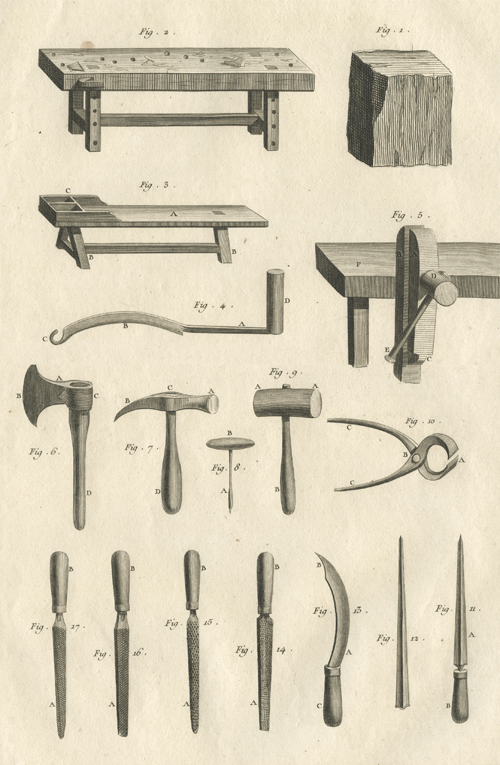
Formier, Outils [Last maker, tools]
A last is a form of the human foot used by shoemakers to shape shoes and boots.
| Shoemakers and Cordwainers | |
| HOME - Henry Blanck - John Sykes - Occupations | |
|
Shoemakers and Cordwainers Henry Blanck and his grandfather, Johann Christian Wenzel were shoemakers from Germany. See Henry Blanck John Sykes and his sons, Benjamin, George, and Joseph, were cordwainers (shoemakers) in England. In 1841, when George Stell Sykes was 15, the town he lived in, Adwalton, had a population of 1028 people. There were 14 shoemakers and 4 shoemakers apprentices. See John Sykes In November 3013 Peter Dodge, a cordwainer, wrote: "Usually the "cottage industry" shoe makers of the early 1800's, cut the leather pieces, then sent them out to be hand stitched in small cottages by women workers. | |
 |
|
| Collection of Maggie Land Blanck Formier, Outils [Last maker, tools] A last is a form of the human foot used by shoemakers to shape shoes and boots. | |
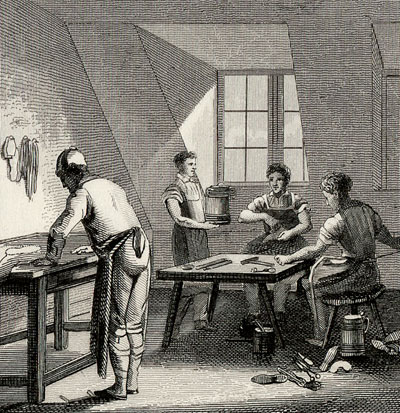 |
Shoemakers 1845 German Print |
| Collection of Maggie Land Blanck
| |
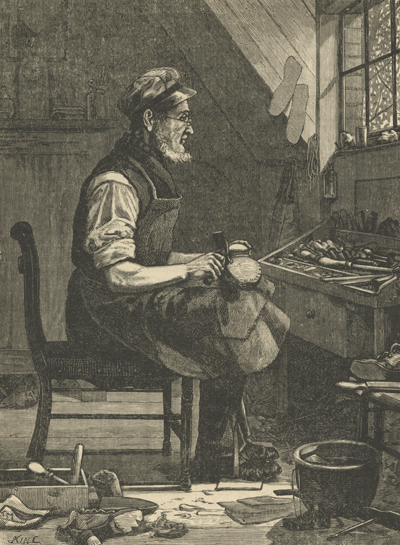 |
|
| Collection of Maggie Land Blanck THE OLD-TIME SHOEMAKER | |
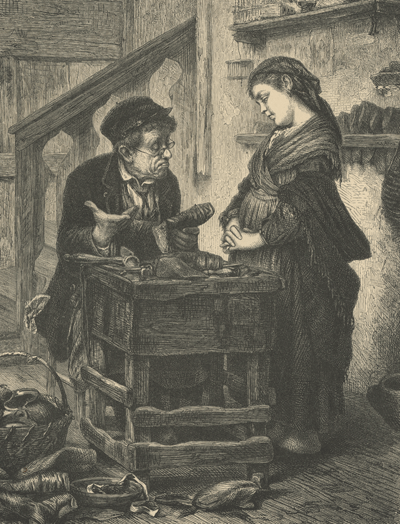 |
|
| Collection of Maggie Land Blanck A HOPELESS CASE From a painting by Antoine Rotta in the Walter's Collection Baltimore | |
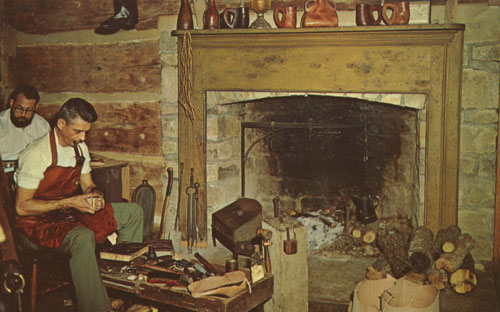 |
Cordwainer Shop, Munson House Spring Mill State Park near Mitchell, Indiana | |
| Postcard collection of Maggie Land Blanck
| ||
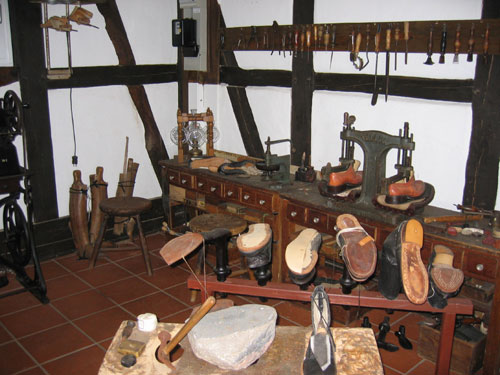 |
Shoemaker's Shop Freilichtmuseum am Kiekeberg | |
| Photo collection of Maggie Land Blanck
| ||
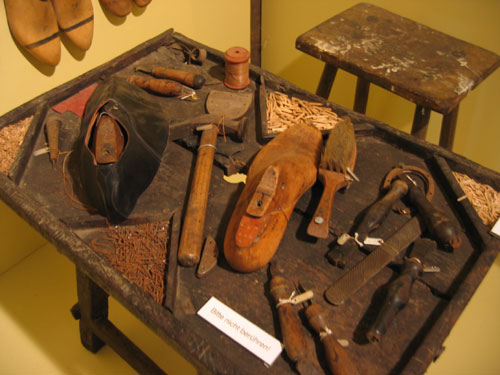 |
Shoemaker's tools The Trade Musuem of Suhlendorf | |
| Photo collection of Maggie Land Blanck
| ||
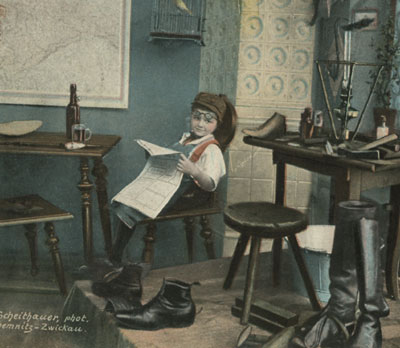 | Postmarked Hulst Germany 1903 |
| Postcard collection of Maggie Land Blanck
| |
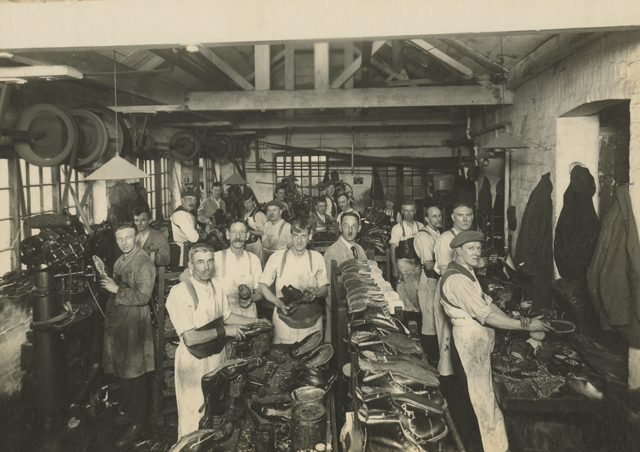 |
|
| Collection of Maggie Land Blanck, circa 1900 England | |
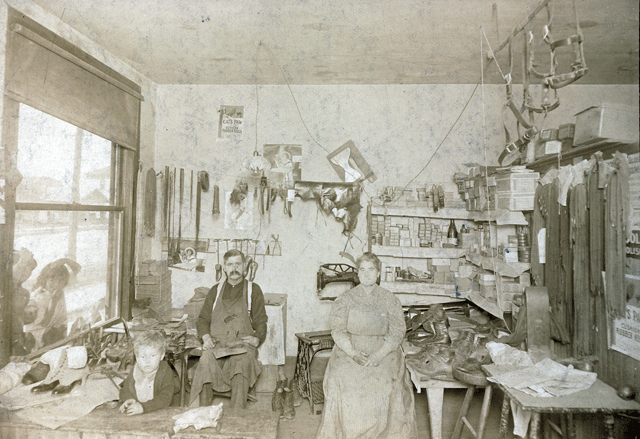 |
|
| Collection of Maggie Land Blanck, Grandma and Grandpa LeFever (or Fener) written in pen on back | |
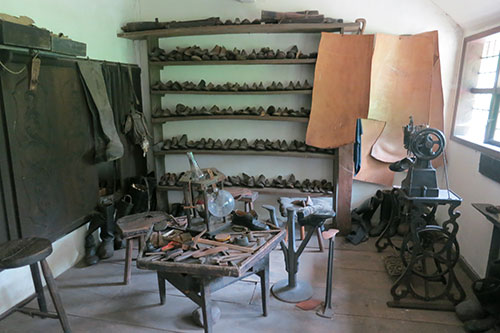 |
|
| Maggie Blanck, 2013, Cloppenburg Museum Germany | |
 |
|
| Maggie Blanck, 2014, Detmold Outdoor Museum, Germany | |
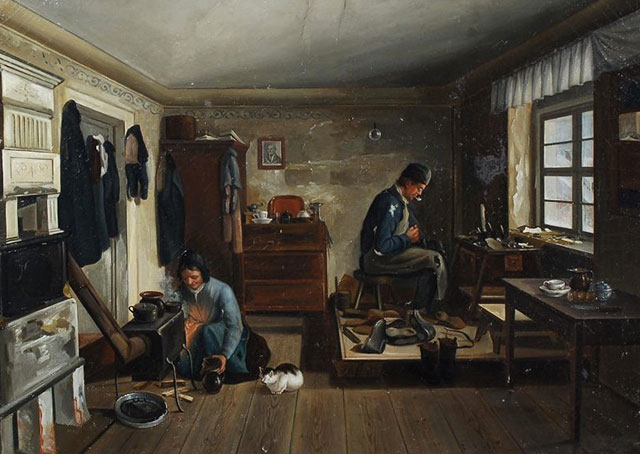 |
|
| Wiki Common, 2013 Beim Schuhmacker, Julius Faber 1850 | |
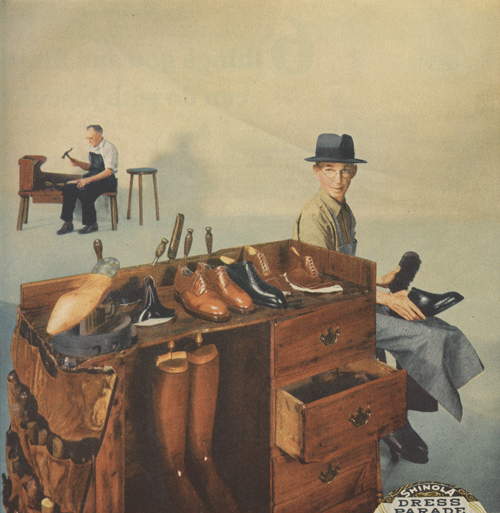 |
|
| Collection of Maggie Land Blanck This 1954 ad for Dress Parade boot polish shows that the shoemaker's trade had not changed that much over the years. The ad makes two interesting points in reference to the old time shoemaker: "Time doesn't mean much to a boot-maker. They'll rub leather for hours and hours to give it that fiery, deep glow." & Dress Parade could give your shoes "that expensive hand-rubbed look". | |
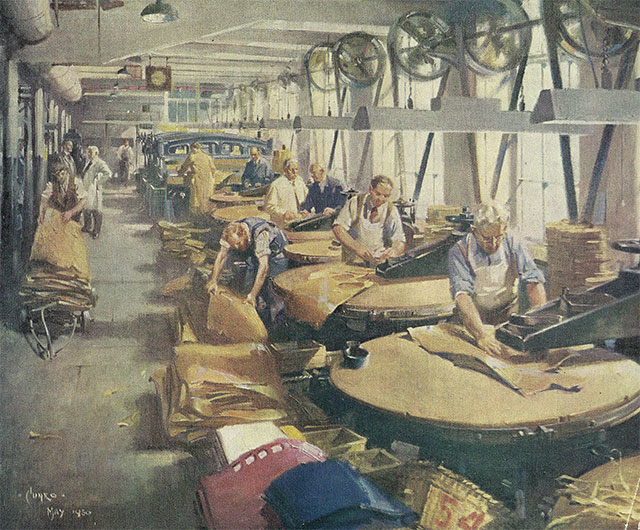 |
|
| Collection of Peter Dodge, October 2013 Leather outsole and mid sole cutting department in C & J Clarks of Street UK, circa 1950. | |
| If you have any suggestions, corrections, information, copies of documents, or photos that you would like to share with this page, please contact me at maggie@maggieblanck.com | |
| HOME |
| Henry Blanck |
| John Sykes |
| Occupations |
|
Please feel free to link to this web page. You may use images on this web page provided that you give proper acknowledgement to this web page and include the same acknowledgments that I have made to the provenance of the image. Please be judicious. Please don't use all the images. You may quote my original text from this web page and use any cited quotes on this web page provided you give proper acknowledgement to this web page and include the same acknowledgments that I have made to the provenance of the information. Please do not cut and paste the whole page. You may NOT make use any of the images or information on this web page for your personal profit. You may NOT claim any content of this web page as your original idea. Thanks, Maggie |
| Copyright by Maggie Land Blanck - This page was created in 2004 - Latest update, October 2015 |